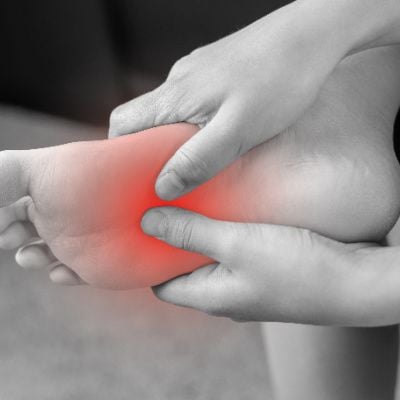 Metatarsalgia is a prevalent and often misunderstood condition that manifests as pain in the ball of the foot. In this comprehensive guide, we will explore the intricacies of metatarsalgia, unraveling its causes, symptoms, diagnosis, and practical strategies for relief.
Metatarsalgia is a prevalent and often misunderstood condition that manifests as pain in the ball of the foot. In this comprehensive guide, we will explore the intricacies of metatarsalgia, unraveling its causes, symptoms, diagnosis, and practical strategies for relief.
What is Metatarsalgia?
Metatarsalgia is a term used to describe pain and inflammation in the metatarsal region, including the bones and joints in the foot ball. Delving into the anatomy of the foot, we'll identify the specific areas affected and shed light on the factors contributing to this discomfort.
Causes of Metatarsalgia
- High-Impact Activities: Discuss how running and jumping can strain the metatarsals, leading to pain.
- Ill-Fitting Footwear: Exploring the impact of tight shoes, high heels, or shoes with inadequate support on metatarsal health.
Signs and Symptoms
Detailing the telltale signs of metatarsalgia, including sharp or burning pain in the ball of the foot, tingling sensations, and the feeling of having a pebble in the shoe. We'll also touch upon how these symptoms can affect daily activities.
Diagnosis and Evaluation
- Physical Examination: Discuss the importance of a thorough physical examination by a healthcare professional to pinpoint the source of metatarsal pain.
- Imaging Tests: Exploring the role of X-rays and other imaging tests in diagnosing underlying issues such as stress fractures or joint abnormalities.
Treatment Approaches
- Rest and Ice: Highlighting the significance of allowing the foot to rest and the application of ice to alleviate inflammation.
- Footwear Modification: Discussing the benefits of supportive footwear and orthotic inserts in redistributing pressure on the metatarsals.
Physical Therapy and Exercises
Detailing specific exercises and physical therapy techniques aimed at strengthening the foot muscles, improving flexibility, and preventing the recurrence of metatarsalgia.
Lifestyle Modifications
Exploring lifestyle changes such as weight management and choosing appropriate footwear to mitigate the impact of metatarsalgia.
When to Seek Professional Help
- Persistent Pain: Encouraging readers to seek medical attention if metatarsalgia persists despite home remedies.
- Signs of Complications: Identifying warning signs that may indicate the presence of complications, such as infections or nerve damage.
Preventive Measures
Offering practical tips for preventing metatarsalgia, including selecting proper footwear, incorporating foot exercises, and being mindful of high-impact activities.
Conclusion
In conclusion, understanding metatarsalgia is the first step toward reclaiming a life free from the discomfort of foot pain. Individuals can make informed decisions about their foot health by delving into the causes, symptoms, and effective management strategies. Metatarsalgia, though challenging, can be successfully navigated with the proper knowledge and proactive measures, allowing everyone to put their best foot forward in the journey towards pain-free living.
Disclaimer:
The information on this website is provided for educational and information purposes only and is not medical advice. Always consult with a licensed medical provider and follow their recommendations regardless of what you read on this website. If you think you are having a medical emergency, dial 911 or go to the nearest emergency room. Links to other third-party websites are provided for your convenience only. If you decide to access any of the third-party websites, you do so entirely at your own risk and subject to the terms of use for those websites. Neither Viera Podiatry, nor any contributor to this website, makes any representation, express or implied, regarding the information provided on this website or any information you may access on a third-party website using a link. Use of this website does not establish a doctor-patient relationship. If you would like to request an appointment with a health care provider, please call our office at (321) 253-4973.


